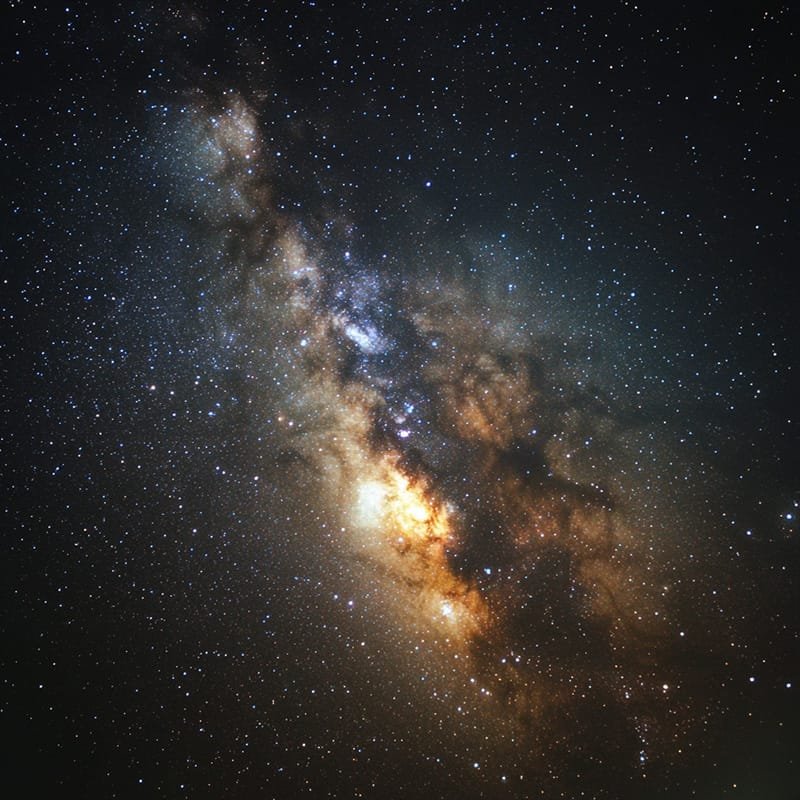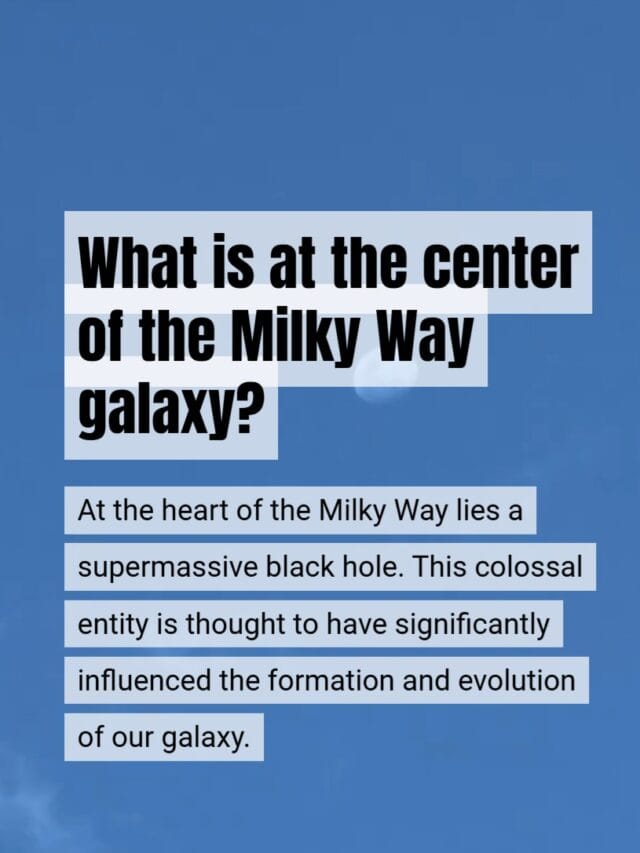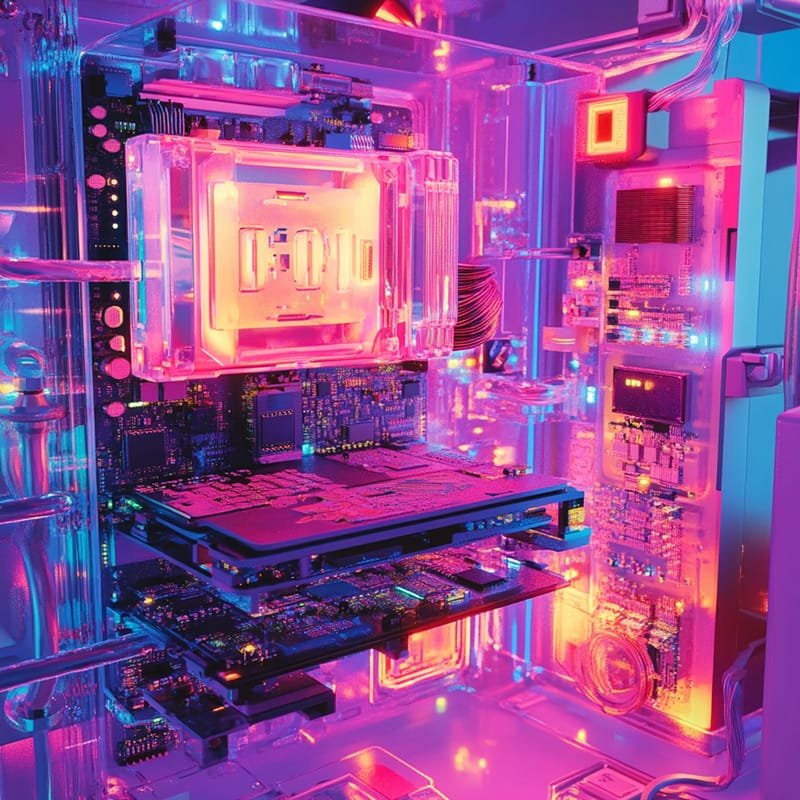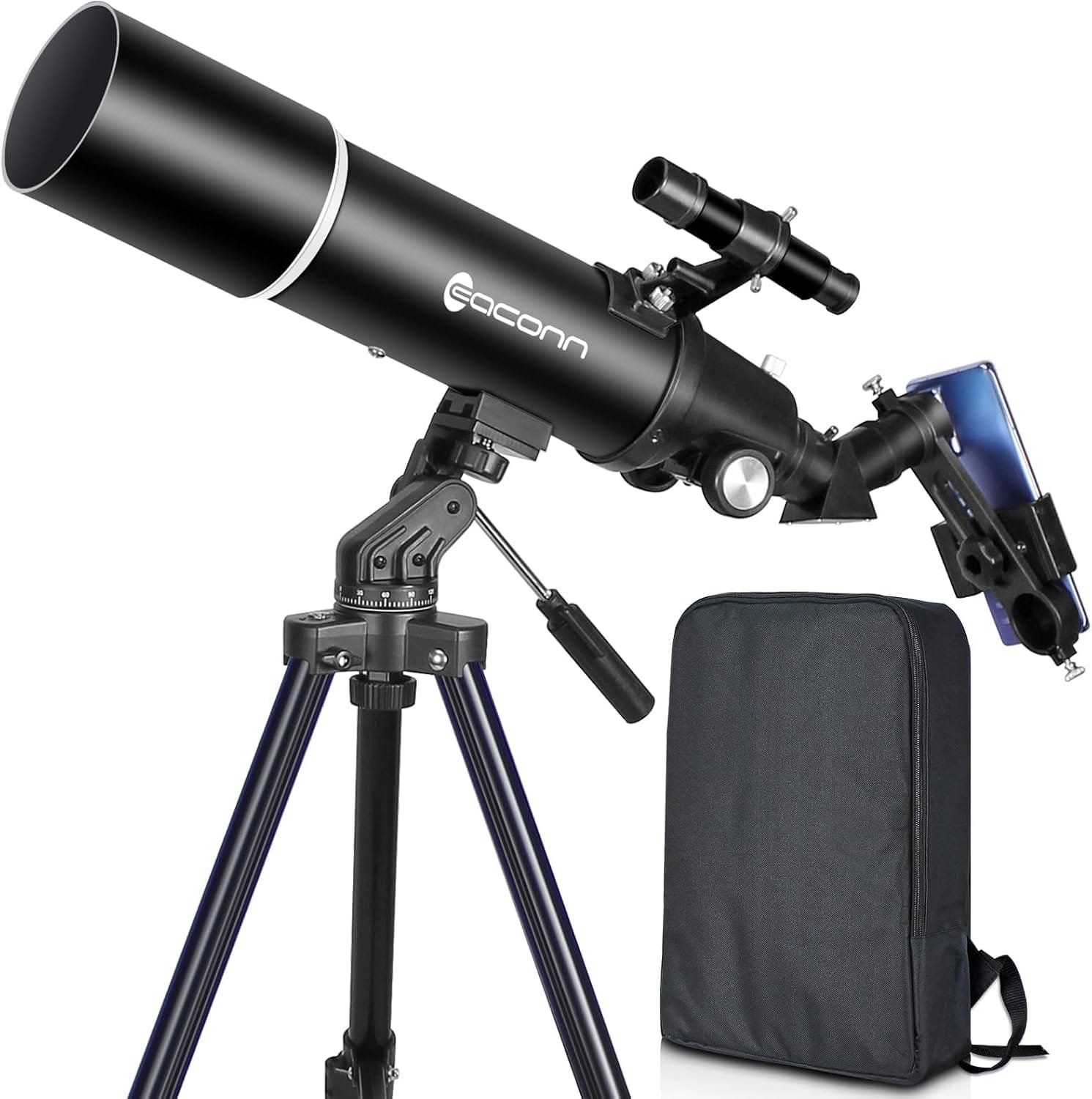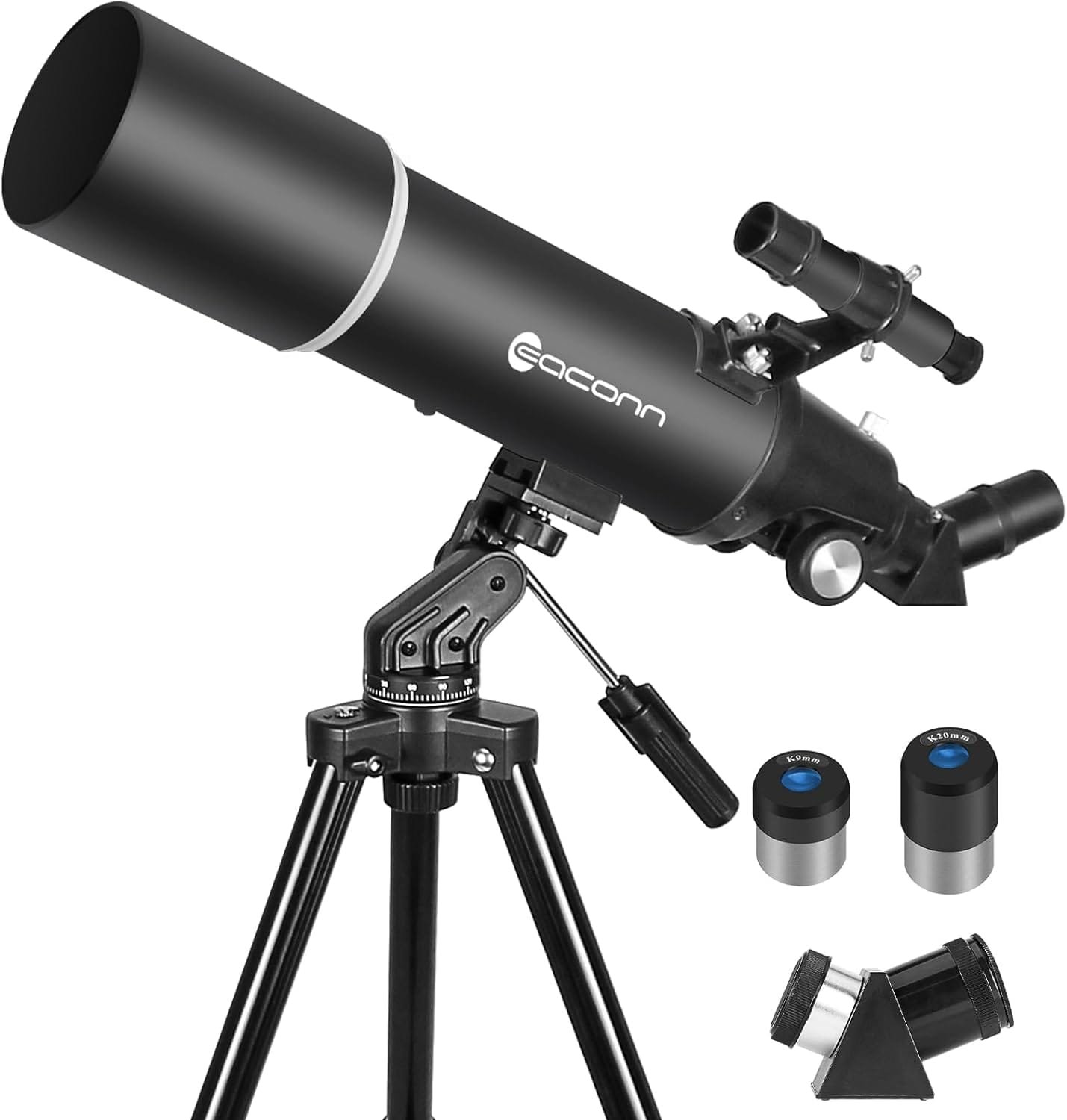Sagittarius A* is a supermassive black hole at the Milky Way’s center, with a mass of 4.1 million Suns, surrounded by dynamic star clusters and gas.
Key Takeaways
- The center of the Milky Way contains a supermassive black hole known as Sagittarius A* (Sgr A*).
- Sgr A* has a mass of about 4.1 million times that of our Sun.
- The region around Sgr A* features dense star clusters, gas, and dust, creating a dynamic environment.
- Recent technological advancements have enhanced our understanding of this region.
- Ongoing research continues to uncover new phenomena and challenges existing theories.
The heart of the Milky Way galaxy is a fascinating area that has intrigued astronomers for decades. At its core lies Sagittarius A*, a supermassive black hole that plays a significant role in shaping the dynamics of our galaxy. This blog post will provide a comprehensive analysis of what exists at the center of the Milky Way, exploring recent discoveries, ongoing research, and the implications for our understanding of the universe.
Sagittarius A*: The Supermassive Black Hole
What Is Sagittarius A*?
Sagittarius A* (often abbreviated as Sgr A*) is the dominant feature at the center of the Milky Way. This supermassive black hole has been the focus of extensive study due to its immense mass and unique characteristics.
Key Characteristics of Sagittarius A*
- Mass and Size: Sgr A* is estimated to have a mass of approximately 4.1 million solar masses. This mass is concentrated in a relatively small region, making it an extraordinary object in our galaxy.
- Visual Confirmation: In May 2022, researchers from the Event Horizon Telescope (EHT) collaboration released the first image of Sgr A*. This groundbreaking achievement confirmed the black hole’s existence and properties, marking a major milestone in astrophysics.
- Activity and Behavior: Sgr A* is not completely inactive. Observations indicate that it became more active about 200 years ago, consuming cosmic debris and exhibiting flares due to material accumulation.
- Influence on Galactic Dynamics: The gravitational pull of Sgr A* significantly affects the orbits of nearby stars and other celestial bodies within our galaxy.

The Galactic Center Environment
The area surrounding Sagittarius A* is rich with various astronomical phenomena and structures that contribute to its complexity.
Stellar Population and Dynamics
Star Orbits
Long-term studies have tracked the orbits of stars around Sgr A*. These stars move in highly elliptical patterns influenced by the black hole’s strong gravitational pull. This tracking has provided crucial evidence for confirming Sgr A* as a supermassive black hole.
Stellar Diversity
The central bulge of the Milky Way is home to both young and old stars. Older, yellow-red stars dominate the bulge, while surrounding regions contain a mix of different stellar ages and types.
Unusual Stellar Objects
Recently, researchers have identified a new class of objects near Sgr A*, referred to as G-objects. These dusty stellar objects exhibit characteristics similar to stars but have appearances akin to gas clouds, further highlighting the unique environment at the galactic center.
Interstellar Medium and Star Formation
Dense Gas and Dust
The galactic center is obscured by dense clouds of gas and dust, which complicate observations in visible light. This material plays a crucial role in star formation processes and influences the dynamic nature of the region.
Star Formation Activity
Recent findings from the James Webb Space Telescope have shed light on star formation within the galactic center. Observations reveal protostars and star-forming regions like Sagittarius C, providing insights into how stars form under extreme conditions.
Molecular Clouds and Prebiotic Molecules
The region is abundant with molecular clouds essential for star formation. Notably, complex organic molecules associated with RNA have been detected, suggesting that this area could be a site for prebiotic molecule formation.
High-Energy Phenomena
The galactic center is characterized by intense high-energy activity, featuring various phenomena that attract researchers’ attention.
X-ray and Gamma-ray Emissions
Observations have identified hot gas, supernova remnants, and other energetic processes contributing to this dynamic environment. Instruments like the Chandra X-ray Observatory have played a key role in detecting these high-energy sources.
Magnetic Fields
Recent studies reveal strong magnetic fields spiraling at the edge of Sgr A*. These findings provide new insights into the dynamics surrounding the black hole.
Hypervelocity Stars
Astronomers have discovered hypervelocity stars believed to be ejected by the gravitational forces of Sgr A*. These stars offer clues about how celestial bodies interact with black holes.
Observational Techniques and Technological Advancements
The study of the Milky Way’s center has benefitted greatly from advancements in telescopes and observational methods.
Radio Astronomy and Interferometry
Radio telescopes using Very Long Baseline Interferometry (VLBI) are essential for observing the galactic center. Radio waves can penetrate dense dust clouds, allowing detailed observations of this region.
Infrared Observations
Telescopes like the Spitzer Space Telescope and SOFIA can see through dust clouds, revealing hidden stars and other celestial objects obscured from visible light.
X-ray and Gamma-ray Observatories
Instruments like Chandra and Fermi Gamma-ray Space Telescope focus on high-energy phenomena occurring near Sgr A*, enhancing our understanding of energetic processes.
Event Horizon Telescope (EHT)
This global network of radio telescopes successfully captured an image of Sgr A*’s shadow, providing visual confirmation of its existence.
Gaia Space Observatory
Gaia measures positions, distances, and motions of stars with great precision. This data helps map the structure of the Milky Way and understand dynamics at its center.
Advanced Data Analysis
The use of artificial intelligence and machine learning is increasingly important for analyzing vast amounts of observational data, helping identify patterns in celestial behavior.
Ongoing Research and Future Prospects
Research into the center of the Milky Way remains vibrant. Several projects are underway to explore its mysteries further:
- Continued Monitoring of Sgr A*: Ongoing observations focus on understanding its behavior, including flares and interactions with surrounding material.
- Improved Imaging Techniques: Enhancements in telescope resolution aim to capture more detailed views of the galactic center.
- Star Formation Studies: Research continues to investigate unique star formation processes in this extreme environment.
- Search for Exotic Phenomena: Scientists are looking for unusual objects like intermediate-mass black holes or concentrations of dark matter in this region.
- Multi-Messenger Astronomy: Combining electromagnetic observations with gravitational wave detections could provide new insights into galactic center physics.
Final Thoughts
The center of the Milky Way galaxy is dominated by Sagittarius A*, surrounded by a dynamic environment filled with stars, gas, dust, and high-energy phenomena. Our understanding has greatly improved due to technological advancements in observational techniques. As ongoing research continues to unveil new insights into this enigmatic region, we not only learn more about our galaxy but also gain valuable knowledge about fundamental processes that govern the universe. The exploration of our galactic center promises to be an exciting journey filled with discovery.

